NASA tracks asteroids using a combination of ground-based and space-based telescopes. The NASA-funded Asteroid Terrestrial-impact Last Alert System (ATLAS), scans the night sky for moving objects and reports any potential asteroid detections, while some space-based observatories use infrared sensors to detect asteroids and their characteristics. Some of these include the Wide-field Infrared Survey Explorer (WISE) and the NEOWISE mission. Using these advanced instruments, the space agency has revealed information about a 1200-foot Potentially Hazardous Asteroid that is set to pass Earth today. Know all about it.
NASA reveals bus-sized asteroid rushing towards Earth today! Check speed, size, other details
06.10.2023 - 05:45 / tech.hindustantimes.com / Karl Reinmuth
NASA has several space and ground-based telescopes in place to discover, track, and study asteroids. But if you're a budding astronomer, you can help the space agency too! NASA's new Daily Minor Planet Project allows astronomers and skywatchers to help discover new asteroids and track them in data sets. To capture asteroids, the Daily Minor Project uses the NASA-funded, University of Arizona-based Catalina Sky Survey which captures nearly 1000 images every night. Due to this volume, NASA scientists fall short of personnel to study these images. After looking at the image, you just have to click on a yes or a no button and add a comment if necessary, before moving on to the next image.
That's how you can help NASA keep an eye on these ancient space rocks!
In a new development, NASA has revealed details about an asteroid that is set to make a close approach to Earth today.
With its vast number of telescopes and observatories, NASA has discovered as many as 1298148 to date, and one of them will come close to Earth today. NASA's Center for Near-Earth Object Studies (CNEOS) has designated this space rock as Asteroid 2023 TG, and it will make its closest approach to Earth today, October 6.
During its approach, it will come as close as just 691,000 kilometers from the planet's surface. NASA has revealed that it is hurtling towards Earth at a staggering speed of 26006 kilometers per hour, which is much faster than a hypersonic ballistic missile!
According to NASA, this asteroid is not big enough to be classified as a Potentially Hazardous Object. A celestial body has to be around 492 feet wide and pass Earth at a distance closer than 7.5 million kilometers to be considered a Potentially Hazardous Object. On the other hand, Asteroid 2023 TG is just 26 feet wide, making it as big as a bus.
It belongs to the Apollo group of Near-Earth Asteroids, which are Earth-crossing space rocks with semi-major axes larger than Earth's. These asteroids are named after the humongous 1862 Apollo asteroid, discovered by German astronomer Karl Reinmuth in the 1930s.

Solar storm barrage strikes Earth! NASA reveals massive impact effect
The solar storm event on October 20 has become somewhat of a mystery to astronomers and space weather physicists. The storm was triggered by a couple of coronal mass ejections (CME) that sideswiped the Earth and did not make head-on contact with the planet. They left the Sun one after the other in small eruptions, that should not have been carrying a high amount of solar matter or electromagnetic charge, but somehow its impact was far greater than some of the strongest CMEs we have seen in recent times. This is quite confusing as most forecasters had predicted a G1-class intensity for the storm, and while the storm itself was clocked at G1, the aurora display surpassed the intensity seen in that category. And now, a NASA image has been shared by a National Oceanic and Atmospheric Administration (NOAA) institute that shows the widespread impact of the solar storm.
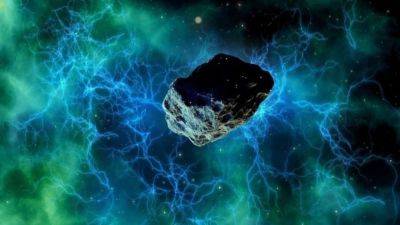
120-foot Asteroid 2023 UR1 to pass close to Earth today; know what NASA revealed
Do you know how many asteroids NASA scientists have tracked to date? Approximately 1,298,148 asteroids have been identified by NASA. The space agency employs a range of advanced ground and space-based telescopes for tracking and researching these cosmic rocks, primarily concentrated within the asteroid belt situated between the orbits of Mars and Jupiter. Telescopes and observatories such as NEOWISE, the Atacama Large Millimeter/submillimeter Array (ALMA), Pan-STARRS1, and the Catalina Sky Survey play pivotal roles in the study of asteroids and the mitigation of uncertainties surrounding their close encounters with Earth.
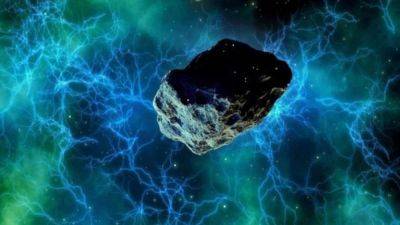
Apollo asteroid to pass Earth today, reveals NASA
For years, it has been known that the most likely cause of the extinction of dinosaurs was an asteroid impact. The most common theory behind the extinction is the Alvarez hypothesis, which claims that an asteroid struck Earth nearly 65 million years ago and wiped out entire species of dinosaurs. This theory is backed by some proof too as scientists have also discovered its impact crater, known as the Chicxulub crater, buried under the Yucatan Peninsula in Mexico. As per the hypothesis, the impact of the asteroid would have caused the formation of huge tidal waves and an impact crater almost 140 km wide. Lland material would have splattered into space, changing the Earth into a nuclear winter-like environment, ultimately leading to the demise of dinosaurs.
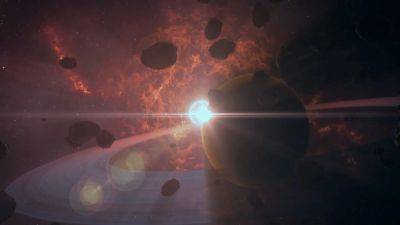
Apollo group asteroid to come closer than the Moon; Know details of approach
NASA has recently issued details about an asteroid designated as Asteroid 2023 TK15 that is expected to make its closest approach to Earth on October 20. This asteroid has been discovered and tracked using various advanced technological instruments such as the NEOWISE telescope, Atacama Large Millimeter/submillimeter Array (ALMA), Pans-STARRS1 and Catalina Sky Survey. Know all about it.
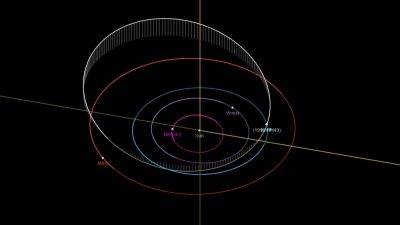
Potentially Hazardous Asteroid to pass Earth today! Know details
You may think asteroids are simply floating rocks in space and while it may seem so due to their appearance, it isn't quite the case. These space rocks can be classified into 3 types based on their structural composition. The most commonly found asteroids are S-type, which are made up of carbon-rich substances. On the other hand, S-type asteroids are made up mainly of silicate minerals and are less common. M-type asteroids are the least prevalent and they are primarily composed of metal. NASA recently sent out a mission to a metal-rich asteroid called 16 Psyche which is supposedly worth more than the whole planet's economy put together, at a staggering $10 quintillion!

600-foot asteroid to do a close flyby of Earth; NASA reveals size, speed, and more
Hazards like solar storms and asteroids constantly appear and pose threats to our planet. NASA diligently monitors Near-Earth Asteroids (NEAs) to safeguard our planet from potential impacts. When NASA's telescopes detect a new NEA, precise observations of its position in the sky are reported to the Minor Planet Center. Subsequently, the Center for Near-Earth Object Studies (CNEOS) utilizes this data to establish the most likely orbit of the asteroid around the Sun. To evaluate the risk of impact and the asteroid's orbit, NASA employs the innovative Sentry II system, featuring a unique algorithm. Sentry II strategically selects random points within the entire uncertainty region, enabling the program to pinpoint very low-probability impact scenarios. Recently, NASA has issued an alert concerning a colossal asteroid that is approaching Earth tomorrow:

Asteroid 2023 TT8 to get very close to Earth today, NASA reveals
Asteroids are abundant in space and as many as 1298148 have been discovered to date. To track and study these space rocks which are mainly present in the asteroid belt between the orbits of Mars and Jupiter, NASA has several advanced ground and space-based telescopes in place. NEOWISE telescope, Atacama Large Millimeter/submillimeter Array (ALMA), Pans-STARRS1 and Catalina Sky Survey are just some of the telescopes and observatories that help study asteroids and remove any uncertainties around their potentially close approaches to Earth.

48-foot asteroid to get very close to Earth today, NASA says
NASA maintains a vigilant eye on the cosmos to track, monitor, and study each and every asteroid in space that comes near Earth. This crucial endeavor involves a combination of space telescopes and ground-based observatories, including the renowned Hubble Space Telescope. As of now, there are 1,298,210 known asteroids that have been checked. While there are no immediate threats from asteroids to Earth, but they can still wreak havoc in the future. Therefore, tracking them is the only solution to avoid any calamities. Recently, NASA has revealed an asteroid, set to pass by Earth. It is designated as the asteroid 2023 TC7. Read on to know more about this asteroid approaching close to the Earth:

House-sized asteroid hurtling towards Earth for close approach, NASA reveals
With its advanced tech such as the NEOWISE telescope, Atacama Large Millimeter/submillimeter Array (ALMA), Pans-STARRS1 and Catalina Sky Survey, NASA has revealed details about an asteroid that will come close to Earth. An asteroid, given the designation of Asteroid 2023 TC1, is on its way towards Earth and could make its closest approach to the planet today, October 13.
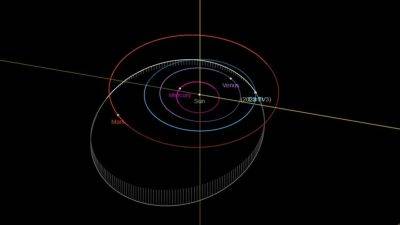
Wow! Asteroid 2023 TV3 to pass Earth 4 times closer than the Moon! Know details
NASA, ESA and other space agencies have a suite of ground and space-based telescopes and observatories to track and monitor asteroids. Despite the presence of these technological marvels, an asteroid snuck past all of them! The asteroid, named Asteroid 2023 NT1, made its closest approach to Earth on July 13 when it entered Earth's 60,000-mile radius, which is 4 times closer than the Moon! It was not a small rock either, as scientists later revealed it was nearly 200 feet wide, about 4 times the size of the Chelyabinsk asteroid that caused massive damage in Russia. It was at last found by the Asteroid Terrestrials-Impacts Last Alert System (ATLAS) observatory in South Africa on July 15.
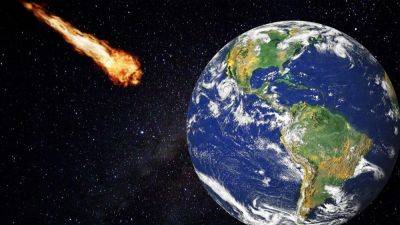
Asteroid hurtling towards Earth today at a mind-numbing 31394 kmph, reveals NASA
On September 8, 2016, NASA launched a historic mission - the Origins, Spectral Interpretation, Resource Identification, and Security-Regolith Explorer (OSIRIS-REx). It was launched to study a Potentially Hazardous Asteroid (PHA) called Bennu, which has a 1/2700 chance of impacting Earth between 2175 and 2195. After a 6-year journey that involved landing on the asteroid and collecting samples from its surface, the spacecraft finally returned the samples last month, after which they underwent a “nitrogen purge”. Today, NASA will finally open up the canister returned by the OSIRIS-REx spacecraft and show off the asteroid sample to the world in an event that will be live-streamed. You can watch it online here.
